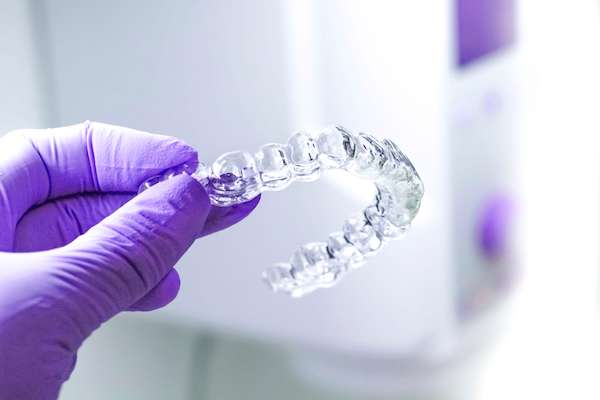 For patients in need of orthodontic care for a variety of issues, such as tooth gaps, crooked teeth or misaligned bites, both Invisalign® and traditional braces are potential treatment options. While many people seek a straight answer to which one of these alternatives is ideal, there are several factors that determine which route is better suited to an individual’s needs. Read to learn what patients should keep in mind when considering these two orthodontic treatments.
For patients in need of orthodontic care for a variety of issues, such as tooth gaps, crooked teeth or misaligned bites, both Invisalign® and traditional braces are potential treatment options. While many people seek a straight answer to which one of these alternatives is ideal, there are several factors that determine which route is better suited to an individual’s needs. Read to learn what patients should keep in mind when considering these two orthodontic treatments.
Factors patients should consider when choosing orthodontic treatment options
While braces and clear aligners are designed with the same goal in mind, to straighten the teeth and address issues with alignment, they both offer different advantages and disadvantages. It comes down to the individual situation and preferences on which treatment option should be pursued.
Aesthetics
One of the main advantages of Invisalign® is that the plastic trays used to straighten teeth are almost invisible, which opens up treatment for people who would otherwise avoid care due to embarrassment about the appearance of braces on the teeth. For working professionals or older patients, having the ability to address any orthodontic issues without anyone noticing is one of the main reasons a person chooses clear aligners over metal braces. However, some younger patients actually look forward to wearing traditional braces and may choose colorful, noticeable rubber bands.
Complexity
While many situations can be treated with either clear aligners or braces, more complex cases often require traditional methods. Braces paired with other appliances, such as expanders, spacers and bite plates, are more effective at addressing severe misalignment, large gaps in teeth, intrusion and extrusion.
Lifestyle
Both Invisalign® and braces require several lifestyle changes on the part of the patient. Traditional braces are fixed on the individual’s teeth and require more orthodontic appointments for making adjustments about every six weeks. There are also dietary changes that need to be made in order to keep from damaging the braces, which includes avoiding many hard or sticky items and snacks.
With clear aligners, patients can sometimes go up to 12 weeks before needing to visit an orthodontist again. Additionally, invisible braces are removable, which means there are no restrictions on food or beverages. However, there is a lot more responsibility on the part of the patient to stick with the treatment plan since the trays can be taken off. People who struggle to consistently wear the aligners for at least the recommended 22 hours a day will struggle to achieve results.
Age
Most orthodontists only offer Invisalign® to older teenagers and adults since these patients are more likely to be compliant than young children. This means that school-aged kids and younger adolescents are only candidates for traditional braces.
Check out what others are saying about our dental services on Yelp: Invisalign in San Antonio, TX.
Conclusion
Understanding the differences between regular braces and clear aligners and what the treatment process looks like for each alternative can help patients choose what will fit with their lifestyle and preferences. Discussing your unique situation with an orthodontist is often the easiest way to gain insight into what treatment will be the most comfortable and effective for you.
Request an appointment or call Evans Family Dentistry at 210-503-7043 for an appointment in our San Antonio office.
Related Posts
For those seeking a straighter smile, Invisalign® is a popular and effective choice for dental patients of various ages. Using clear aligner trays, this system provides a more discreet treatment option, often with less discomfort and in less time than traditional braces. Straightening crooked teeth can result in a host of helpful benefits:Improved appearance.Fewer headaches.Reduced…
Seeking emergency dentistry treatments can help you get relief. It can also help you regain your normal dental functions and self-esteem. The dentist can share dental care tips that you may not know or have forgotten about. If you want to know more about the dental advice that emergency dentistry can provide, here are the…
Emergency dentistry can provide immediate relief from the discomfort that you may be experiencing. While waiting for your turn, you can do a few things to help your situation. Knowing what to do can prepare your teeth and gums for urgent treatment.If a patient wants to know what they can do while waiting to see…
